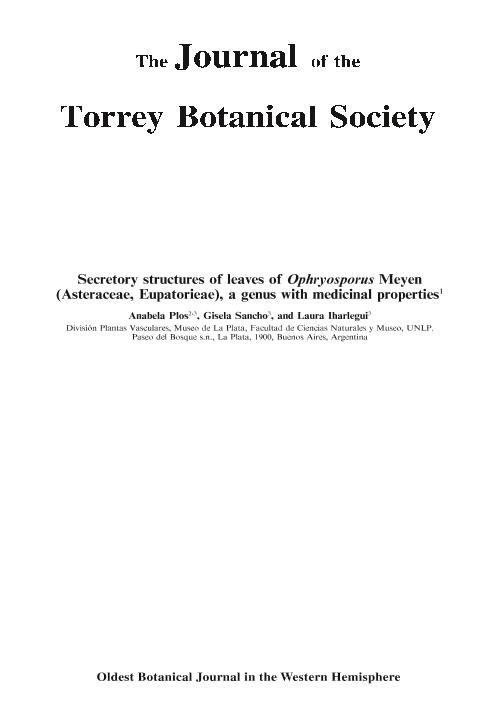Artículo
Secretory structures of leaves of Ophryosporus Meyen (Asteraceae, Eupatorieae), a genus with medicinal properties
Fecha de publicación:
10/2011
Editorial:
Torrey Botanical Society
Revista:
Journal of the Torrey Botanical Society
ISSN:
1095-5674
Idioma:
Inglés
Tipo de recurso:
Artículo publicado
Clasificación temática:
Resumen
Ophryosporus includes ca. 40 species restricted to the Andes of Ecuador to Argentina, with a few species inhabiting Brazil. Some of its species have multiple medicinal uses such as analgesic, antisyphilitc, anti-inflammatory and antiprotozoal activity, expectorant, relief of migraine, wound healing, antiseptic and antimicrobial activities. Despite of the number of chemical studies on this genus, its secretory structures are scarcely studied. An anatomical survey of leaves shows that two types of secretory structures coexist: 1) secretory reservoirs and 2) glandular trichomes. The secretory reservoirs are schizogenous and have an uniseriate epithelium. The glandular trichomes are biseriate vesicular represented by subtypes α and β. The profuse development of secretory reservoirs in leaves of Ophryosporus could affect foraging by folivorous insect and may be the primary source of secondary metabolites with potential medicinal uses.
Palabras clave:
Anatomy
,
Asteraceae
,
Morphology
,
Trichomes
Archivos asociados
Licencia
Identificadores
Colecciones
Articulos(CCT - LA PLATA)
Articulos de CTRO.CIENTIFICO TECNOL.CONICET - LA PLATA
Articulos de CTRO.CIENTIFICO TECNOL.CONICET - LA PLATA
Citación
Plos, Anabela; Sancho, Gisela; Iharlegui, Laura; Secretory structures of leaves of Ophryosporus Meyen (Asteraceae, Eupatorieae), a genus with medicinal properties; Torrey Botanical Society; Journal of the Torrey Botanical Society; 138; 4; 10-2011; 391-399
Compartir
Altmétricas




